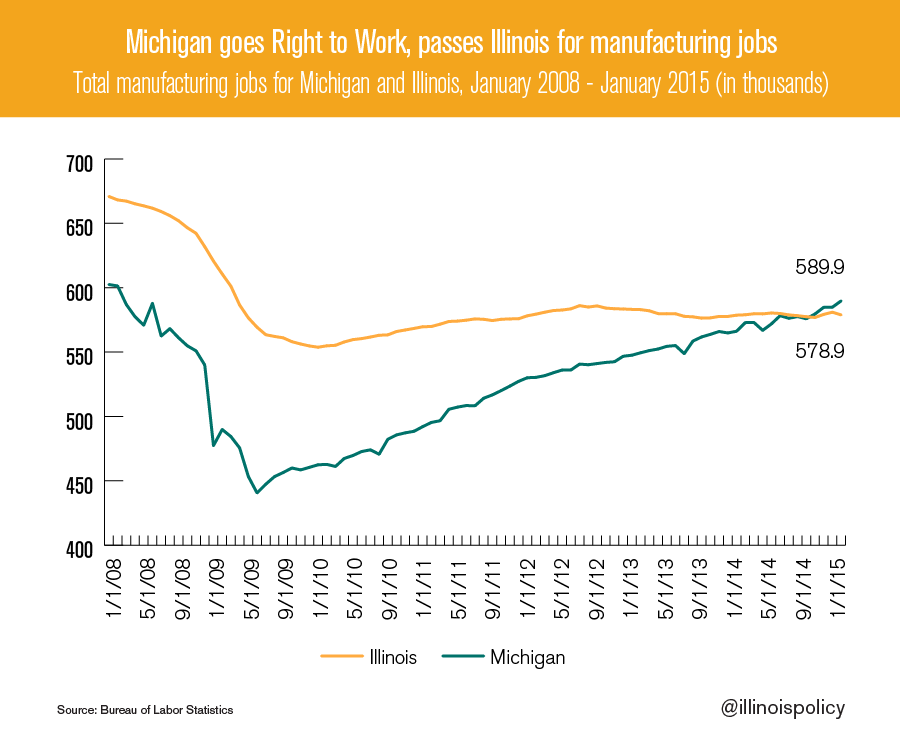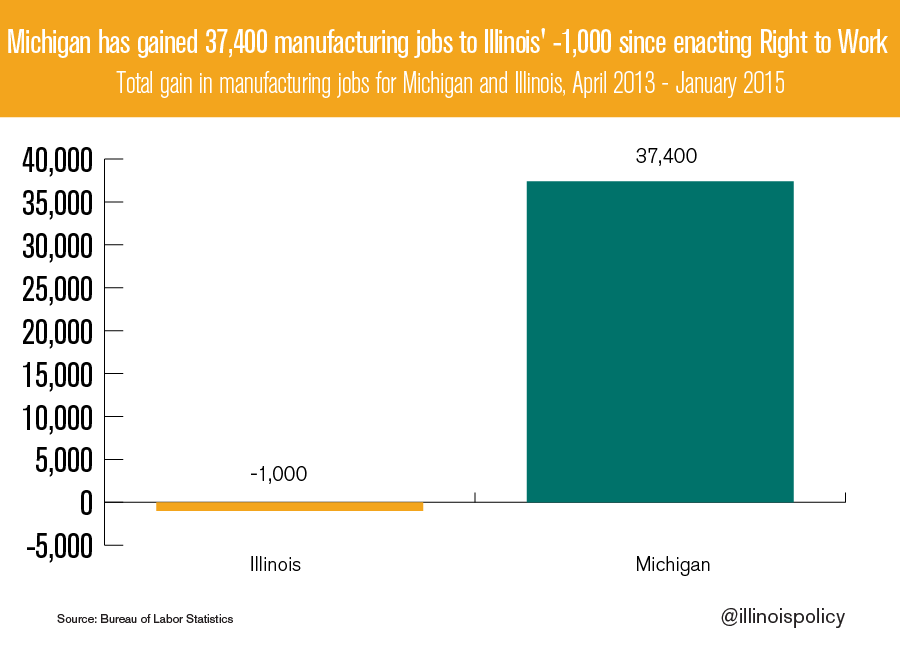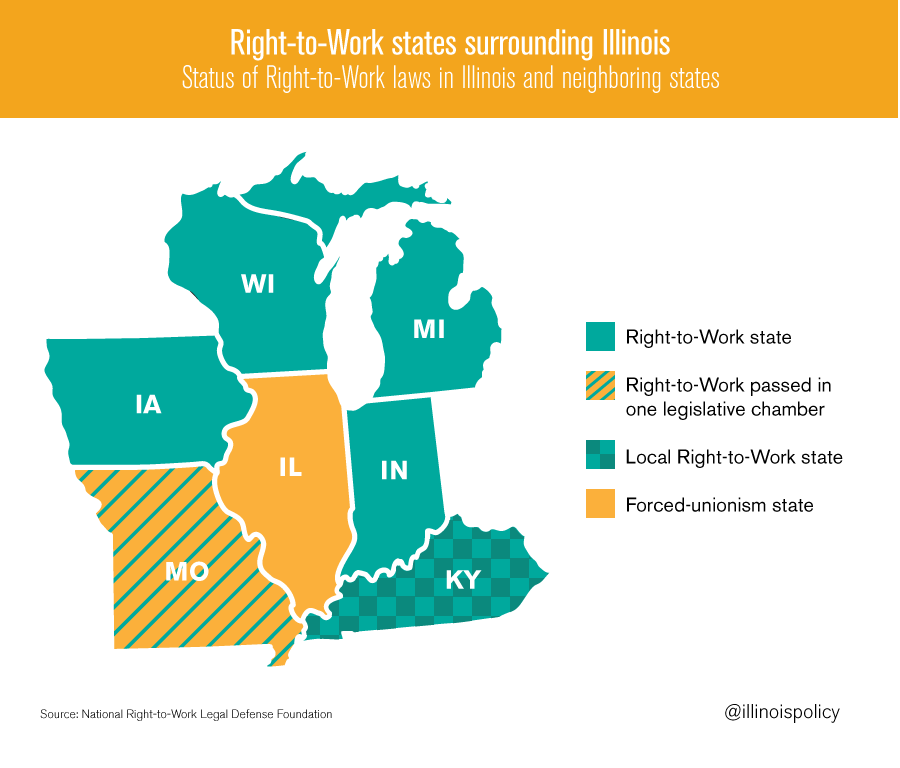Manufacturing employment in Illinois has stagnated and even shrunk while Indiana and Michigan have boomed
Manufacturing employment in Illinois has stagnated and even shrunk while Indiana and Michigan – neighboring Right-to-Work states – have boomed.
Michigan surpassed Illinois in total manufacturing jobs in October 2014, less than two years after passing a statewide Right-to-Work law. As of January 2015, Michigan has 11,000 more manufacturing jobs than Illinois. That’s despite the fact that Michigan had nearly 70,000 fewer manufacturing jobs than Illinois when the Great Recession began, experienced heavier manufacturing job losses during the recession and has a workforce that is not even three-quarters the size of Illinois’.
Perhaps even more surprising is how Indiana is closing the gap on Illinois in total manufacturing jobs. When the Great Recession began, Indiana had 128,000 fewer manufacturing jobs than Illinois. The Hoosier State has since cut that gap in half and now has 62,800 fewer manufacturing jobs than Illinois. With a workforce that is only half the size of Illinois’, Indiana has nearly as many manufacturing jobs.
Indiana and Michigan both passed statewide Right-to-Work legislation in 2012. Since those laws were enacted, both states have dramatically outperformed Illinois in creating manufacturing jobs. Indiana passed a Right-to-Work law in February 2012, which went into effect in March 2012. The Hoosier State has gained manufacturing jobs in 30 of the 35 months since then, while Illinois has lost manufacturing jobs in 21 of those 35 months.
On net, Indiana has gained 38,800 manufacturing jobs since enacting Right to Work, while Illinois has lost 2,100 over the same time period. By contrast, if Illinois had simply grown manufacturing opportunities at Indiana’s rate over the same time period, there would be an additional 50,000 manufacturing jobs in Illinois today.
The same story played out in Michigan, only a year later. Michigan passed a Right-to-Work law in late 2012, largely driven by concerns about losing manufacturing opportunities to Indiana. Michigan’s law went into effect at the end of March 2013. The Wolverine State has gained manufacturing jobs in 17 of the 22 months since then, while Illinois has lost manufacturing jobs in 14 of those 22 months. On net, Michigan has created 37,400 new manufacturing jobs since enacting Right to Work, while Illinois has lost 1,000 over the same time period.
By contrast, if Illinois had simply grown manufacturing opportunities at Michigan’s rate over the same time period, there would be an additional 40,000 manufacturing jobs in Illinois today.
Manufacturing employment in Illinois has stagnated and even shrunk while Indiana and Michigan have boomed. Indiana and Michigan are not only growing their manufacturing bases, but they are also using policy advantages, such as Right to Work and reasonable workers’ compensation standards, to steal manufacturing opportunities from Illinois.
With Wisconsin having enacted its own Right-to-Work law on March 9, and Kentucky counties passing Right-to-Work ordinances, Illinois’ manufacturing sector is going to be under even greater pressure. The Land of Lincoln is being surrounded by states that are accumulating policy advantages and attracting opportunities away from Illinois.
Illinois municipalities that are tired of seeing their manufacturing base hollowed out can take action to end the exodus. Home-rule units of government in Illinois, like those in Kentucky, can enact local ordinances to create Right-to-Work cities, towns and villages across the state. While a statewide Right-to-Work law is unlikely to come out of Springfield any time soon, that should not stop municipal governments from growing their local economies and creating more opportunities for their residents, while reinvigorating Illinois’ industrial backbone.
Image credit: slworking2





